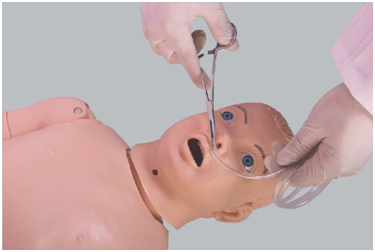Homepageпјҡ NEWS >> What are the differences between the nasogastric tube model and real clinical practice?
There are many differences between the nasoglage tube model and the real clinical operation, which are mainly due to the limitations of the model design and the complexity of the real clinical environment. The following is a detailed analysis and summary of these differences:

The difference between material texture and human tissue:
The nasal feeding tube model is usually made of PVC plastic material, and its texture and softness are different from real human tissue. Real human tissue is softer and more elastic, while models may be harder or less elastic.
Differences between simulated environment and real environment:
Although the nasogastric tube model strives to be realistic in the simulated environment, it cannot completely replicate all the details of real clinical operation. For example, the model cannot simulate the physiological reactions such as breathing and swallowing of patients, nor can it simulate the subjective feelings such as pain and discomfort that patients may have.
Simplification of operation process:
In order to facilitate teaching and training, the operation process of the nasogastric tube model is often simplified. In real clinical operation, medical personnel need to comprehensively consider the overall condition of patients, the severity of illness, psychological status and other factors, and the model can not fully simulate these complex situations.
Simulation of complications and risks:
There are some complications and risks in the process of nasal feeding tube insertion, such as trachea error and esophageal perforation. Although the nasogastric tube model can simulate the manifestations of some complications, it cannot completely simulate the mechanism of occurrence and the real risk. Therefore, in the real clinical operation, medical staff need to be more careful and meticulous.
Simulation of individual patient differences:
In real clinical operation, each patient's nasal structure, esophagus length, and gastric tube insertion difficulty are different. Although the feeding tube model can simulate general nasal and esophageal structures, it cannot fully simulate individual differences in all patients. Therefore, during the training process, health care workers need to recognize this difference and learn to adjust according to the actual situation.
Simulation of psychological factors:
In real clinical operation, patients may have resistance due to pain, fear and other psychological factors, affecting the insertion of nasal feeding tube. The nasogastric tube model cannot simulate this psychological factor, so health care workers need to consider and deal with this situation in the training process.
In summary, there are differences between the nasogastric tube model and the real clinical operation in several aspects. Although these differences cannot be completely eliminated, by fully understanding these differences and paying attention to and adjusting them in training, medical staff can better master the nasogassive tube insertion technology and apply it in actual clinical work.